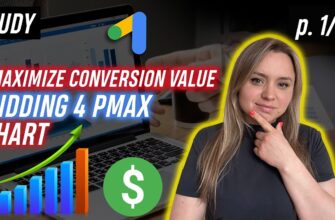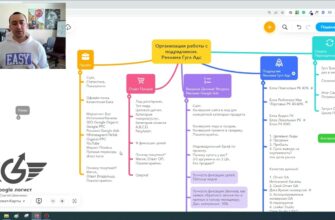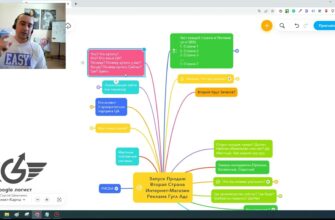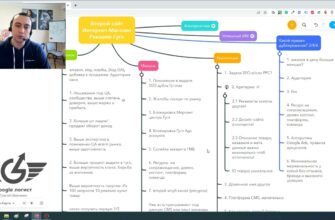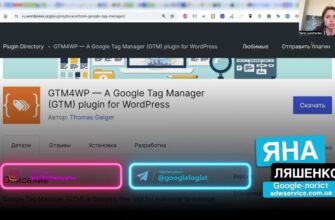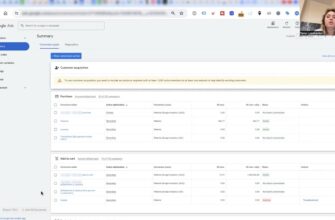- What is native advertising?
- Features of native advertising
- Examples of native advertising
- In the search output
- On social networks
- In the media
- How does native advertising differ from other implicit formats?
- Advantages of native ads
- Disadvantages of native ad format
- How to use native advertising: useful tips
- How to analyze the effectiveness of a native advertising campaign?
The usual intrusive advertising, designed to maximize reach, has long since become annoying. Each of us faces marketing influence up to a hundred times a day, and it is annoying. It is for this reason that large companies are constantly searching for effective ways to promote their product in such a way that it does not look like banal advertising.
Native advertising is one such marketing solution. It attracts with its content without a clear selling message. There is no call to purchase in the advertisement – only information about the benefits of the product and the brand’s potential. Such content echoes the information content of the site on which it is placed. The main task is to form the consumer’s understanding that the advertised product or brand is capable of satisfying his needs.
In this article we will tell you how native advertising works, why it is needed and how best to use it.
How many calls and sales will I get by ordering contextual advertising from you?
I need to calculate the conversion of my website Describe
the task
in the application
Calculate potential ad revenue Google
contextual advertising calculator
What is native advertising?
Native advertising is marketing communication adapted to the content of the media that broadcasts it. The average consumer sometimes does not even perceive such ads as advertising. They contain a message not about the features of the product, but about its value, so the information does not cause rejection.
Reference! The prerequisite for the emergence of native advertising was “banner blindness”, which appears in the consumer over time. The essence of this phenomenon is that the effectiveness of classic advertising communications on the Internet falls due to the fact that users subconsciously begin to ignore direct offers.
Constant exposure to advertising sometimes has the opposite effect – the audience perceives the promoted brand rather negatively. Some people use an additional tool to fight banners, AdBlock – special programs that block ads on websites.
Features of native advertising
The harder it is for a user to recognize native advertising, the better its quality is considered. But what else makes it different from other internet marketing tools. Let’s get to the bottom of it! So, the native should:
- Match the placement platform. For example, you should publish text ads on information platforms, and videos on YouTube. In addition, the subject matter of such content should always coincide with the subject matter of the platform itself. For example, on a site about video games you will not see an advertisement for women’s perfume, and in a blog for car owners – beading kits.
- Fit seamlessly into the content. As opposed to flashy and flashy traditional ads, native ads usually blend in with the main content of the platform. That’s why you have to create unique ad content from scratch for each platform. You cannot simply copy a post from Facebook and post it on Instagram. This significantly affects the cost of such advertising.
- Visually resemble regular content. Native should not stand out from other materials with its visual design – colors, fonts, style of presentation. It should mimic regular posts and articles.
- Have a more neutral labeling. Native is rarely labeled with an explicit “Advertisement” label. Usually, softer wording is used – “Special project”, “Partner material”, “Sponsored post”, “Promo”. And in social networks such advertising is often not labeled in any way at all and looks like an ordinary blogger’s post.
- Have value for the reader. Such an advertisement should itself carry useful information for the user, even if you completely remove references to the advertised product. For example, a selection of the best cloud storages will remain interesting for the reader even if the mention of the promoted service is removed. This distinguishes the native format from traditional advertising tools, the only purpose of which is to sell a product or service.
Examples of native advertising
For the realization of native advertising, it is important to choose the appropriate format and method of presentation, and it can be launched on any platform. An informative article, banner, photo, video, infographic or social media post – the choice is determined by the company’s area of activity and goals, as well as the level of competition in the niche it occupies.
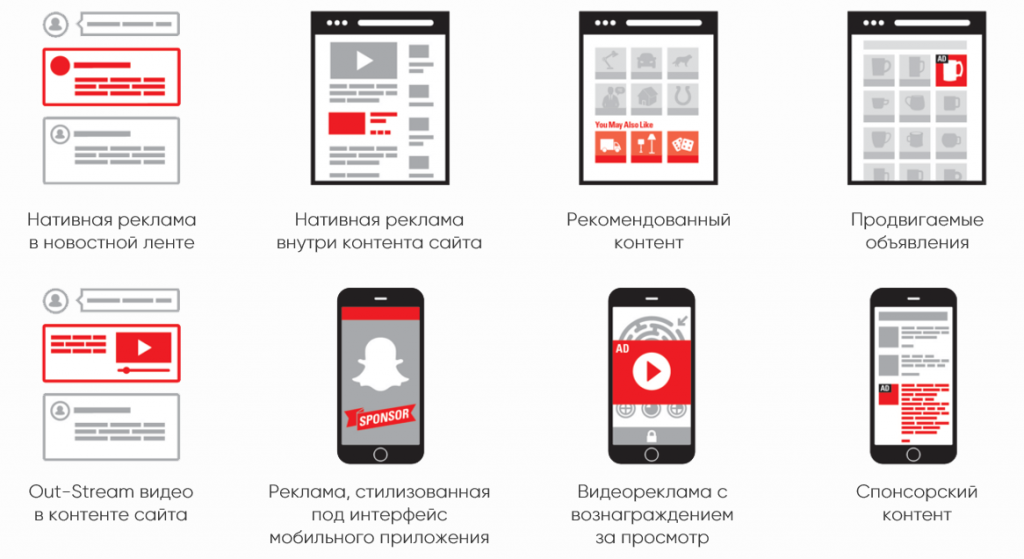
Let’s look at a few examples of native advertising of various formats.
In the search output
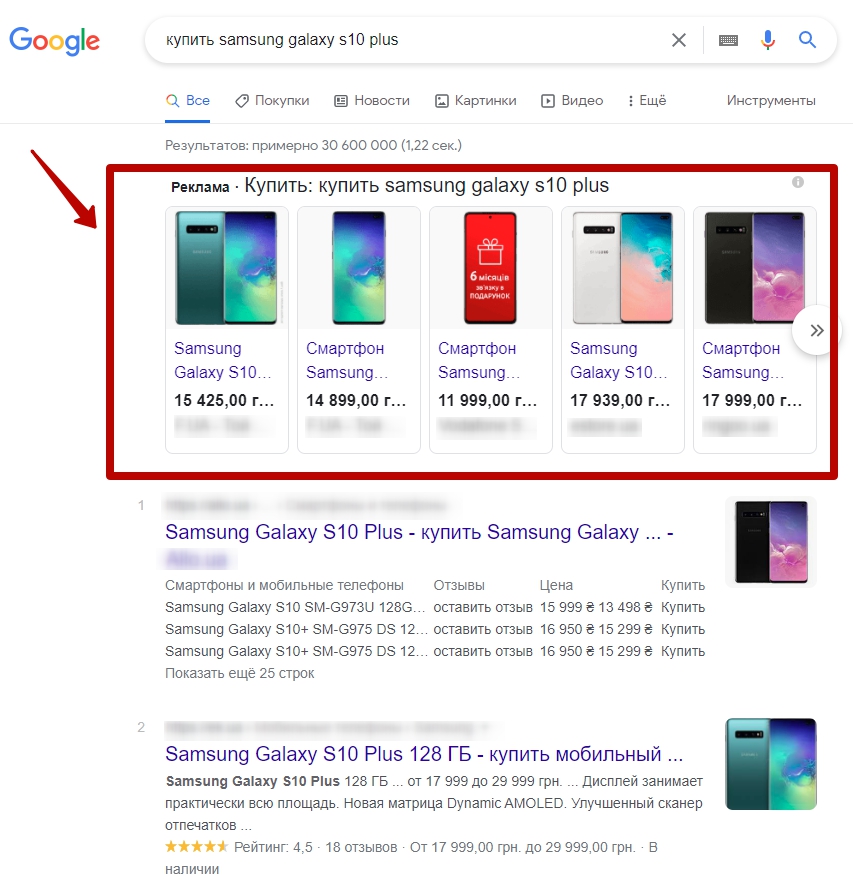
The search engine results page displays paid positions realized in several formats. Despite the fact that such advertising is contextual, you can also find signs of native advertising.
Such communication is best adapted to the user’s need, which he himself informs the system about through his search query. The advertising block is disguised as a usual list of links to relevant resources. Some people do not even pay attention to the fact that these are paid ads and click on them without any problems.
How many calls and sales will I get by ordering contextual advertising from you?
I need to calculate the conversion of my website Describe
the task
in the application
Calculate potential ad revenue Google
contextual advertising calculator
On social networks
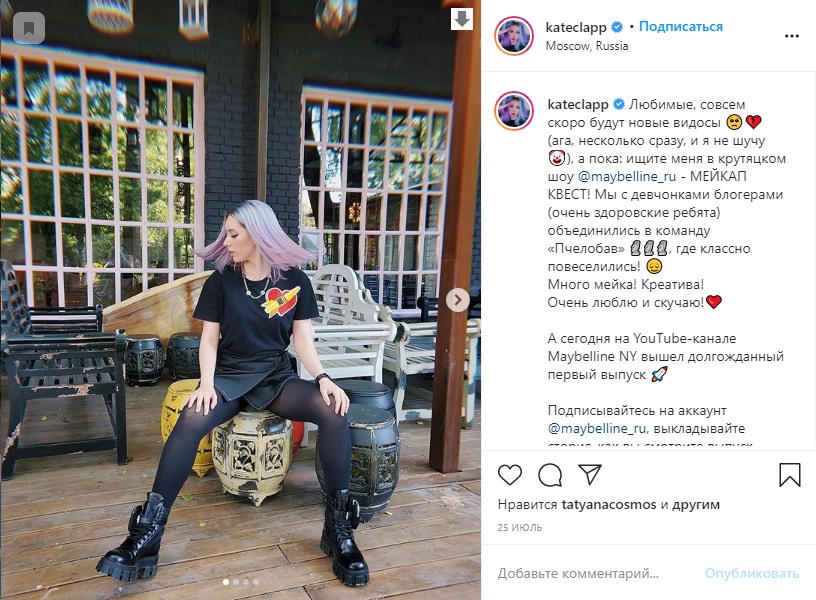
On such platforms there is a huge number of ways to implement native advertising. These are, for example, paid posts in the newsfeed with the marker “advertisement”, ideally corresponding to its subject matter. An additional advantage of social networks is the targeting of such publications to a certain segment of users, taking into account their interests and behavior.
The audience of social networks is oriented towards so-called opinion leaders. Native advertising in this case can take the form of a collaboration, when popular personalities make a review or use the advertiser’s product.
On video content hosting sites, native advertising is usually realized as a video review of products or services. The most impressive results can be seen when the video goes viral.
In the media
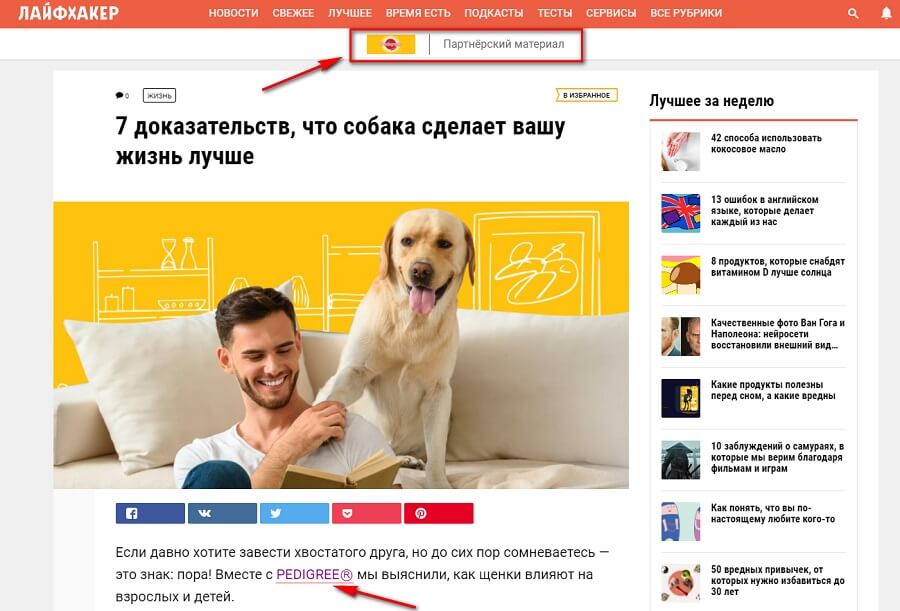
Many advertisers effectively use popular platforms to keep the audience interested in their brand or product by placing relevant materials and informational articles on them. Native advertising in this case is a publication in one of the formats listed below, organically integrated into the media concept:
- Sponsor material – an article authored by the editorial staff that mentions a product. Its content is relevant to the request of the publication’s audience, and the reference to the brand creates a strong association: the brand helps to solve the user’s problem;
- Recommendation or expert opinion – information material containing useful advice and experience shared by consultants from the advertiser’s company. The association works here: a brand is an expert in a certain subject, trustworthy and able to solve the problem;
- Information occasion or PR-article – material about an event related to the brand, which is planned or has already happened. Such notes allow to create a certain image and position the company on the market;
- Special project – original interactive content (contests, games, tests, etc.) created specifically for brand promotion. The main goal of such projects is to convey information in an interesting form and create a memorable positive image;
- Additional “See also…” blocks. They are not annoying because they are relevant to the user’s interests. And this is their main difference from banners.
How does native advertising differ from other implicit formats?

All formats of implicit advertising have a number of qualities in common, but they also have significant differences. Let’s look at each of the three popular formats today:
- Native advertising. Information published at the advertiser’s expense with the appropriate label “Sponsor Material”, “Promo”, “Advertisement”, etc. Such content is free of controversial opinions and manipulation of the reader;
- Genie. Similar content without indicating that it is hosted on a site for a fee. Like native advertising, jeans fits well into the media format. The difference lies in the hidden presentation of information about the brand, product or service. For the consumer is not obvious answer to the question of what exactly advertised, and who does it;
- PR materials. Such information is published in the media free of charge and is not labeled as advertising. There are certain requirements for PR – no comparisons with competitors or self-promotion, expert content in the most ethical way possible.
Advantages of native ads
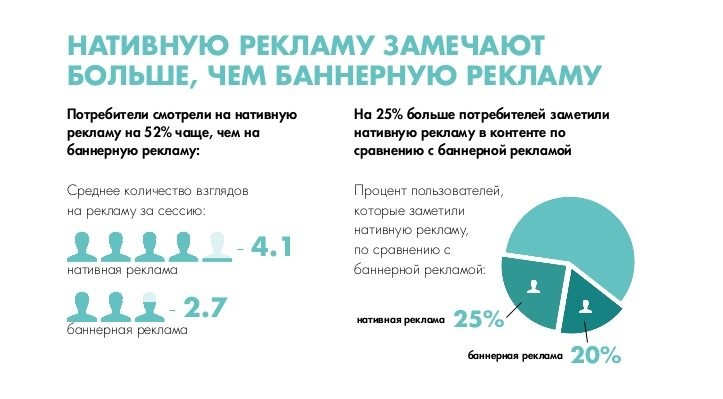
- It is not blocked by the AdBlock program. This free application for Google Chrome browser easily detects and removes banners from the screen. Native advertising remains, as it is an integral part of the information content of the site.
- The audience with banner blindness is not excluded from the information field. Due to the intrusiveness and large volume of marketing influence, many people have already developed a stable immunity to advertising. Native is less vulnerable in this aspect – it offers consumers only the content they are interested in.
- It is often not associated with advertising. Not everyone recognizes in interesting information material, advertising subtext, often taking it as advice or simply passing it by.
- It has a good credibility. Sites that publish native advertising are responsible for it. For fear of jeopardizing their reputation, reputable media outlets check information for accuracy, product safety and quality before publishing.
- Format flexibility and multichannelization. Native advertising can be realized on any websites, social networks, applications and blogs. The choice of format is also unlimited: video clip, interview, informative article, infographic, etc.
- Includes “word of mouth”. An Instagram blogger publishes a post about a product – a subscriber buys it and is satisfied with it – and then he himself recommends the product to his friends and subscribers for free. And so on down the chain. Native triggers the process of recommendations and sharing, which can give a huge audience reach and bring a significant boost in sales. In addition, when advertising material in the form of tests, simple games and useful selections is presented in an interesting way, people often share it on their own, making such content viral.
Disadvantages of native ad format
- Original content is required. Unlike banner advertising, native advertising cannot be replicated in the same form on dozens of different sites. Its content must be original and adapted to the information content of each resource on which it is placed. To create such exclusive content, it is necessary to find a professional copywriter.
- High cost. This disadvantage of native advertising format is related to the previous one. For each media it is necessary to create original content that corresponds to its specifics. An article for a blog, a photo or post for Instagram, a video for YouTube – each of them requires certain expenses. The salary of a specialist in native advertising should also be included in the budget.
- Lack of clear standards. Unlike traditional advertising with established formats, there are no uniform templates and formulas for success for native advertising. What works on one platform may be ineffective on another. You have to work by trial and error, selecting the optimal presentation of material for each particular case. This complicates the process of creating videos and articles and makes it impossible to guarantee the result of a promotional campaign.
- It is difficult to evaluate the result. Since these ads mimic regular content, it’s not easy to track their real effect. Traditional metrics like clicks and conversions are often inapplicable here. Reach, engagement, impact on brand awareness – all of this is difficult to measure in numbers. Often the results of a native campaign can only be assessed indirectly, for example, through sales growth.
- Low conversion rate. Native advertising usually lacks a clear call to action and a unique selling proposition. Consequently, it rarely leads to direct sales here and now. Rather, it works for the future, building brand loyalty and preparing the ground for future conversions. If you need a short-term surge in the number of orders, it is better to use other formats.
- Ineffective on its own. The tool works well to increase awareness and trust in the brand, but to convert this trust into sales, it is often necessary to combine it with other formats.
How to use native advertising: useful tips
It’s not enough to simply disguise ads as regular content – you need to make your audience like them. Here are a few tips to help with that:
- Adapt content to the specifics of the site. For example, you should not try to place long text longreads on news portals or insert videos into text blogs. Study the editorial policy of the resource and create native advertising in an appropriate format so that it fits seamlessly into the content of the site and does not cause rejection among the audience.
- Choose opinion leaders who share your values. If a blogger writes about a healthy lifestyle, you should not promote fast food through him. If he is known for his love of traveling, it is unlikely that his subscribers will be interested in advertising office furniture. The native format will be effective only when it meets the interests of the target audience.
- Emphasize the benefit to the reader. The more practical benefits a person gets from reading an article, the more likely they are to bookmark it, share it with friends, and show loyalty to the brand mentioned. Informative, solving readers’ problems, answering their questions – this is the basis of a truly effective native.
- Evoke emotions. Unlike traditional marketing tools, native sells not so much directly, but through positive emotions and associations that arise in the reader. Your task is to surprise, interest, make people laugh, arouse curiosity and a desire to try the product. The main thing is that people do not remain indifferent when they come into contact with your advertising material. Emotions are memorable and build brand loyalty.
- Be spontaneous. Good native advertising responds quickly to current events and looks spontaneous at the same time. Tie your promotional materials to the current agenda – whether it’s major cultural and sporting events, the time of year, or even just the weather outside your window.
- Get behind the scenes. People are always interested in seeing how processes are organized inside any company. Capitalize on this interest – take a virtual tour of the production facility in your promo video, talk about the corporate culture and employees, and show the product from the inside.
How to analyze the effectiveness of a native advertising campaign?
It is quite difficult to track the effectiveness of native advertising. And the results for this format may not appear immediately. However, there are established metrics and KPIs that you can use to get a rough idea of the effectiveness of the campaign:
- Site audience response. Track how many views your advertisement has garnered on the site, likes and comments in social networks. At the stage of discussing the terms of placement with the blogger, you can agree on certain metrics – for example, the advertising material will be fixed on the main page of the blog until it receives a certain number of clicks.
- Traffic to the site. The easiest way to evaluate the effectiveness of native integration is to place a link to the site in a publication. By tracking the number of clicks you can determine the price of one attracted user by dividing the amount invested by the number of clicks.
- Ask your customers. Connect a module on your site that allows you to create a survey of your audience, where they learned about your company. A manager can find out where a customer came from while talking on the phone.
- Brand traffic. If the native was placed without an active link, then an indirect confirmation that the advertising works, can be an increase in the share of branded queries from the organic Google results.
Tip! If your task is to attract the maximum number of leads, you can track the effectiveness of native advertising by offering potential customers a promo code for ordering on the site or buying in the store.


